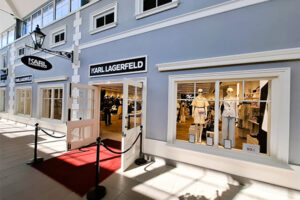BY CHRISTOPH M. ACHAMMER
Of course we will witness such developments, but will this mean the end for one of the world’s oldest professions? When one considers facilities that only operate in order to meet people’s needs for certain goods, one may be tempted to agree. But do we really believe that the desire to laugh, eat, communicate, and go shopping in urban places that bring people together will ever be fulfilled by virtual experiences? Probably not: and yet the shopping center industry is facing the great challenge – or the great opportunity – of returning to the original idea of its founder, Victor Gruen. It was his desire to rediscover, in the urban sprawl of Missouri, something that he had left behind in his home city of Vienna, which led him to create the first shopping mall in today’s sense of the term.
Alongside shops, this brought together a police station, a post office, a kindergarten, meeting rooms, and further public facilities, all arranged around public spaces that were conceived to encourage a public sense of coming together. The need for social contact was and remains stronger than any urge to buy. I insist that this has not changed in the slightest in the intervening 60 years. Quite the opposite: We long for social exchange in a real world – something much more sophisticated than simply acquiring goods. We can acquire goods by taking advantage of the excellent possibilities offered by online shopping and other virtual aids, but we only do that in order to have more time to enjoy the other qualities offered by communication and shopping. The weekly hypermarket visit cannot represent the ultimate quality of life.
How about drinking a cup of coffee while leafing through a book, chatting with other users in an electronics showroom, or discussing the supply chain of a clothing store while receiving advice about the various destinations on this supply chain? What about the wide range of culinary temptations and activities related to the planting, har-vesting and processing of foodstuffs? A simple glance at the internet is enough to identify thousands of real-world activities that can or could occur in a location between the home and the workplace. This definition of the “third place” is nothing other than the definition of a good shopping center.
For us architects, these new challenges mean no less than becoming active in the core business of our clients long before the physical design process has begun. We are trained to develop new ideas: ideas which should not be limited to, while of course being fully compatible with, the forms of our clients’ buildings. Could any challenge be more wonderful? Probably not – and not only at Christmas!
What is your opinion on this topic? Discuss it with us! Send your opinion to opinion@across-magazine.com !






